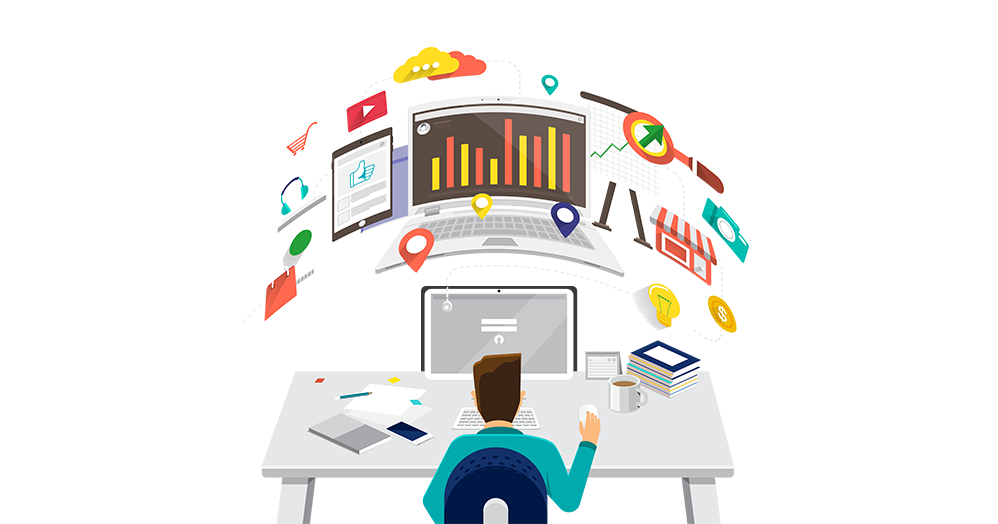Using Analytics for Improving Your E-Commerce Sales

“Data Data Data! I can’t make bricks without clay.” Sir Arthur Conan Doyle, Physician and Writer
You might have installed the best Analytics tool in the market; like Adverity, Google Analytics, Hotjar, Klavio, Woopra, etc. But the point is, does your team use these tools effectively and optimally?
It’s beyond doubt that you generate an enormous amount of data in your e-commerce store. This data includes customer behaviour and insights, customer conversions, marketing statistics, product movements, (slow vs fast-moving) customer complaints, low stock or damaged stock, and so on. But all this data is pointless, if not appropriately interpreted, analysed, and actioned.
Sadly, only a minuscule percent of online sellers sit down to analyse their data. Most retailers are busy trying to improve sales through aggressive but ineffective ads, offers, schemes, and keeping an eye on the traffic, but not much else. Many retailers don’t observe if their annual or periodic goals and targets have been met or learn from user experiences.
The following simple but effective checks can ensure absolute ROI on your Analytics tool.
What device is the customer is using?
Even as back as a decade ago, the mobile phone was just a device to make and receive calls. Now it’s a watch, alarm, planner, notepad, calendar, payment device, internet device, and more…packaged as a pocketable device. Without a doubt, people are spending more time on their mobile phones than in conversing with others or working. So much so, it’s a force to reckon with, when it comes to online buying. In fact, predictions are that mobile devices will soon replace conventional desk-based systems, in the near future. Therefore, the retailer needs to design applications that are also mobile-friendly in terms of layout and ease of operations. This is not to take away the possibility of desktops and laptops being used to transact purchases.
Are we respecting the content from social channels?
Content in social channels is a very happening thing in these times. What is written about online stores is important to improving business, and comprises almost half of the data, required to make meaningful analyses. Use your monitoring tools to gather data from social media. What do customers want? What are they talking about? Is there any information on competitive data? Does your store have a good impression?
This data can be effectively used to create brand awareness, sales or lead generation, customer involvement, brand identity, and store traffic.
Have we done any kind of surveys?
Conduct studies using website survey tools such as segregating traffic through various sources like ads, search engines and social media, and even word-of-mouth. There are tools to help with the duration of a visitor’s stay at your website. Naturally, the longer the time spent, the better are the positive outcomes. Numbers play an important part, in any survey. The more the number of visitors during a particular phase, or for a web page, the better the scope for conclusive analysis. Explore the type of activity performed on your website. This can include seeking the Help Desk, reading the FAQ, trying to log in to get more information, and generally navigating the site for longer periods.
What is the percentage of our customer conversions?
Analytical tools can help you with the activities that are performed on your website. How many visitors browse your products and go back without any action? How many move from browsing, to adding products to their cart? Do they keep changing their decisions and canceling the shop cart orders? How many are finally checking out with their purchases? If visitors are dropping products into the cart but abandoning them soon, you’ve got to study what is going wrong. Usually, it’s the price, or something as simple as free delivery. Many customers are turned off by a charge for delivery. Your content plays a critical part a well. Well-written and clear product descriptions will invite a customer. Text with grammatical and spelling errors will drive the customer away. Another interesting observation is of existing customers shopping for a new product. In other words, an old customer shopping for a new product. This can be good news.
Are our pages top landing?
Keep checking reports that declare store analytics and web analytics. Store analytics is about the factors that optimize store performance, such as improved product quality, enhanced store design, uncluttered pages, and other usability aids which increase the traffic footfall, and any kind of numbers. Identify the difference between your top landing and low-performing pages. Map your success quotient with the underperforming pages.
Understanding how your customers are behaving and their experiences with your website is a key factor to help you create compelling and meaningful CTAs.
Reach Us At
Corporate Address
5th Floor, Vijay 66 North, Jubilee Enclave, HITEC City,Hyderabad, Telangana 500081
About Company
© 2024 Shift Logistics Private Limited all rights reserved